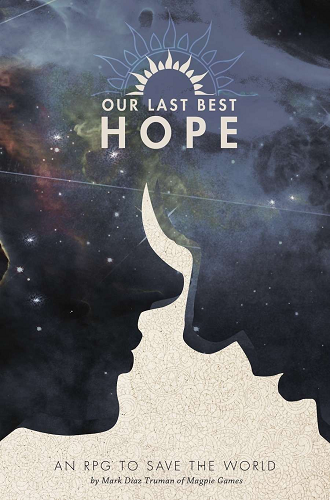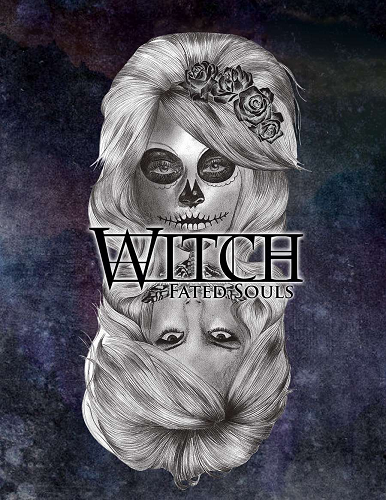Tabletop Tuesday: RPGs Designed by People of Color
Like our previous article on tabletop roleplaying games designed or written by women, I’ve been approached with questions about TTRPGs by people of color (PoC). I’m sad to say, after perusing my library and looking through my decades of gaming, there aren’t as many names or games as I’d like.
Still, I believe I have a good list of some of my favorites designed or written by PoC. Some of these games are well-known while others will be new, but I think they’re all excellent RPGs.
As before, before anyone asks, “Where’s <favorite writer/designer>?”, these are games I’ve had the pleasure of playing. Some may be self-contained games, others supplements; yet I stand by each one as recommended to at least try.
Without further ado, here is my top ten RPG books written or designed primarily (or entirely) by PoC.

Teenagers from Outer Space
I’m not going to lie; Mr. Pondsmith will appear again in this article. R. Talsorian Games has too many products, many of which graced our gaming tables during my youth.
Teenagers from Outer Space, however, probably created some of the greatest memories in our group. A comedy game, TFOS was based primarily on 1980’s high-school anime; aliens move to Earth and enroll their children in high school, with all the expected comedy, drama, and action to ensue.
TFOS was great for young gamers, not only because of its material but its simple system. Long before FATE, Pondsmith already understood the benefits of minimal stats and player-created skills and aspects.

Cyberpunk
Although TFOS may have created the best memories, Cyberpunk was one of my favorite settings. The first cyberpunk-genre TTRPG (predating Shadowrun by a mere year), Pondsmith brought us everything we wanted: an urban capitalist dystopia full of near-future technology, dangerous streets, and fighting “the Man.”
A product of its time, Cyberpunk initially was set in the “far future” of 2013, before changing eras with its second edition. The game is the opposite of TFOS, with its “crunchy” rules, multiple character sheets, and complicated charts; I wouldn’t have it any other way, however, as the gameplay is as gritty as the story.
Although Pondsmith refined the game with Cyberpunk 2020 and Cyberpunk v3.0, he’s maintained that same 80’s/90’s feel. Although I love Shadowrun for other reasons, whenever someone asks about playing cyberpunk I direct them to the RPG with that very name.

Steal Away Jordan
A drastic change from those I’ve mentioned, Steal Away Jordan was probably one of the first RPGs to focus on serious, real-world issues. A game about 19th-century slavery, that’s who players portray and they’re subject to the slaveowner from the start; the GM determines names, worth, etc., while players only pick their general traits, motivations, goals, and relationships.
Julia Bond Ellingboe made sure the gameplay shows the imbalance of power yet also contains some free-will. The GM doesn’t know players’ goals (achieved through related tasks), even though they can crack down on players’ activities at any time.
Although a bit complex in its mechanics, Steal Away Jordan may be the perfect game for players to navigate complex mixes of dice rolls and drawn cards. Not to mention, the Skull Die, a last-ditched attempt that reflects the everyday gamble and deadly lives of American slaves.

Apocalypse Prevention, Inc.
Eloy Lasanta gave us a fun game in the form of Apocalypse Prevention, Inc., a nod to dark comedies about secret organizations fighting the forces of darkness. Drawing inspiration from Hellboy, Men in Black, etc., API sets players in the role of agents or staff.
API has a fun system that uses a familiar D20 technique but adds a bit of player-driven moments with the concepts and passions. Although crunchy at times (particularly with combat), the overall game works well, taking the best of several different systems.
Third Eye Games has also jumped on the Savage Worlds bandwagon and created a version with those rules. If you like that system (and I do), then you have the same exceptional setting and much smoother gameplay.

Our Last Best Hope
Mark Diaz Truman’s breakthrough came with this awesome GM-less science-fiction game. “Apocalypse prevention” of a different flavor, this game channels movies like Armageddon or Sunshine, where a group of people is Earth’s last best hope to prevent the end of humanity (or the planet).
Players portray a group attempting to prevent some sort of Crisis, including all the drama and danger that makes those stories fascinating. Like Fiasco or A Penny for My Thoughts, OLBH uses a variety of die rolls, limited pools, and spotlight techniques to help the players face threats and build a story.
Built for one-shot games, OLBH is a favorite of mine for both introducing new players as well as unprepared game nights. Easy to set up and with simple rules, this is a great coop storytelling experience.

Witch: Fated Souls
I had briefly given this game an honorable mention in our previous article. Now I can provide Liz Chaipraditkul’s work the attention I believe it deserves.
Like Urban Shadows and the World of Darkness, Witch: Fated Souls is a modern horror-fantasy. Players portray Fated, people who’ve made a deal with a demon; each Fated is different depending on the demon, their pursuits, and their magical focus and fate.
Gameplay is familiar to those who’ve dealt with classic RPGs, with attributes, skills, etc., although it uses 2D10 instead of 1D20. The magic system is a bit complex, but I think it’s one of the most interesting, as it’s interrelated with the character (and thus the story).

Do: Pilgrims of the Flying Temple
Sometimes, you enjoy something that’s a little silly and off-the-hook. Like my love of TFOS from my youth, Daniel Solis’ Do: Pilgrims of the Flying Temple provides that same mood in the form of a zanier Avatar: the Last Airbender.
Players portray pilgrims, young adventurer-monks sent by the Flying Temple to small worlds where people ask for help. Your goal is to help solve each world’s problem, but in the process, you often end up creating more.
Do uses a unique cooperative storytelling system, with a rotating GM, situations guided by randomly drawing different colored stones, and tales created through the input of the other players. Like a strange mix of Cosmic Patrol and Fiasco, Do lets imaginations (and humor) fly wild.

Nitrate City
Doselle Young, working with Bill White, created a fantastic setting using the FATE system. As if they’d blended the World of Darkness and Sin City, Nitrate City is a supernatural noir experience with classic monsters and early-20th-century culture.
The game focuses on fighting crime and surviving the machinations of a mafia run by Frankenstein’s monster (or mobster, in this case). Set in an alternate-history 1950s Los Angeles, the world has a Flicker Effect that channels silver screen creatures into real-world entities.
Young enhances the FATE rules through Cinematic Approaches based on movie genre, each one catering to how your character handles a situation. I also enjoy the introspective noir-aspect, where characters not only face external threats but discover themselves through these approaches.

Harlem Unbound
A recent addition to shelves, Chris Spivey’s sourcebook for both Call of Cthulhu and Gumshoe brings Lovecraftian mystery to Prohibition-era New York City. Harlem Unbound brings the eponymous neighborhood to life, from music to organized crime, but fills it with darker mysteries and threats.
Like the systems for which it’s written, Harlem Unbound puts players in the role of individuals caught up investigations into the strange. Set at the height of the Harlem Renaissance, however, these characters also face the real-life issues African-Americans experienced during the 1920’s.
As a sourcebook, Harlem Unbound benefits from the excellent systems of Chaosium and Pelgrane Press. Still, between the artwork, the setting, and the experience, Darker Hue Studios brings those games to something new and fantastic.

Companions’ Tale
My last entry is kind of cheating, as it’s currently only available to Kickstarter backers or those lucky enough to playtest the game. Laura Simpson’s Companions’ Tale is a cooperative storytelling game about a hero, or rather, their companion and the stories they bring with them.
Unlike most RPGs, players don’t portray a single role – instead, they take turns doing everything from narrating as the hero’s companion to witnessing an event to creating a map that keeps track of the journey. Players are inspired by decks of cards that provide everything from one-word themes to character archetypes to portraits of people.
Like most GM-less games, the goal is more about the story than developing personal characters. What makes Sweet Potato Press‘ game stand apart is the map created by the end, a tangible reward that showcases the journey your group has produced.

Honorable Mentions
Like before, picking only ten RPG was painful so I want to mention a few others, starting with Mike Pondsmith (again). From Mekton to Castle Falkenstein to Dream Park, as well as the official RPGs of popular anime series, R. Talsorian has produced quality RPGs for decades.
Similarly, Mark Diaz Truman is a co-founder of Magpie Games, which means he’s partially responsible for one of my favorite games: Urban Shadows. His latest RPG, Cartel, has begun to show up at tables, and he has more great games coming soon.
As with any of these lists, this is just a small sample of games designed or written by PoC. In an age where self-publishing is more accessible, and players find audiences through eBooks and the Internet, this demographic is growing larger.
I only hope that interested players give these games a chance and encourage the designers and writers. The hobby can only benefit from sharing these fantastic RPGs and the unique perspectives and stories they might provide.


Good list, but I’m surprised you didn’t spare a mention for Hellas from Khepra Publishing, co-written by Jerry D. Grayson.
LikeLike
You should check out the work of Louis Porter Jr, too. He wrote Haven: City of Violence (maybe skip that one) but he does a ton of good work nowadays for Pathfinder.
LikeLike
We are looking for panelists for a Diversity in Gaming panel at Philcon 2018. Contact me if interested in more information. https://philcon.org/
LikeLike